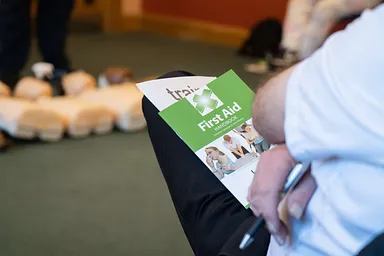Epilepsy is a complicated medical condition which causes sudden bursts of electrical activity in the brain. These bursts of electrical activity cause a temporary disruption to signals passing between brain cells, and can cause a seizure. Epilepsy does have some known triggers; however it can also be very unpredictable. There is a risk to the sufferers health when a seizure occurs; therefore it is useful to have a basic of understanding of first aid, as this can go a long way when helping someone.

Epilepsy has several known triggers which can suddenly place a sufferer into a seizure like state. These include flashing lights, emotional upset and changes in temperature. In some cases the sufferer may experience strange thoughts, headaches and a heightened sense of smell and taste prior to the seizure starting. This is useful if you know the person who suffers with epilepsy, but not so good when you are out in public and a stranger has suddenly collapsed at your feet.
There are a whole variety of conditions which can cause a person to collapse to the ground, so it is useful to be able to spot the symptoms of a major (generalised) seizure. Apart from sudden collapse you should look for a casualty who becomes rigid with the possible arching of the back. The next phase usually results in the casualty making violent jerking movements (convulsions), the eyes can roll back and the jaw can become clenched. These are the classic signs of a seizure which will require immediate treatment to help the sufferer.
The best thing to do if you are first on the scene is to allow the seizure to take its course. It can be upsetting to see a person violently throw themselves around on the floor, but it will prove far more dangerous to their health if you try to hold them on one place. This can cause fractures and dislocations as the convulsions push huge amounts of force around the body.
Instead focus on securing the area around the casualty. This can be achieved by removing any dangers / bystanders within the local vicinity, and then by padding the area around the casualty. Ideally through the use of cushions or blankets, but people typically improvise in public locations with the use of coats, jackets and jumpers. The only time you would restrict a casualty's movement is if you felt that they were at serious risk of injury of if their life was in danger.
It is safe to deal with the casualty when the seizure has stopped. This is usually when the convulsions have finished and when the body appears relaxed. Now is the time to check on their breathing, make sure the airway is clear and look out for signs of major injury. An ambulance should be called if it is their first seizure, during multiple seizures and whether you think they have sustained a major injury.
There is an outside chance that they could have stopped breathing. In these situations call an ambulance immediately and commence with CPR until the paramedics arrive.
At all other times it is safe to roll them into the recovery position whilst you wait for them to awake. It typically takes a period of time for the sufferer to fully recover and they will often require several hours of sleep.

.jpg)
.jpg)